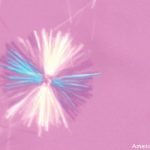Trained observers performed the crystal identification. The observers were required to pass a certification test involving a Web-based evaluation and the examination of five vials of synovial fluid.
Ultrasound was also performed on at least one clinically affected joint among SUGAR study subjects. The tests were conducted by ultrasound-trained rheumatologists or radiologists blind to the results of the crystal tests. A hyperechoic band on the surface of the articular cartilage defined double contour sign; tophus was indicated by ultrasound as a hyperechoic, heterogenous lesion surrounded by an anechoic rim; and snowstorm was defined as joint effusion with a snowstorm appearance.
Additionally, the SUGAR study involved gathering subject age, sex, ethnicity, number of joint-swelling episodes, whether or not they utilized urate-lowering therapy, the number of weeks since their last episode, disease duration and whether they had involvement in their metatarsophalangeal joint (podagra). Each subject had a physical examination and the numbers and locations of swollen joints, as well as any suspected tophi, were recorded. Finally, serum urate levels—current and highest recorded in available records—and the presence of any radiographic abnormalities were recorded.
In analyzing the data, the study team examined the sensitivity, specificity, positive predictive value (PPV) and negative predictive value (NPV) of each diagnostic ultrasound feature. They looked at the presence vs. the absence of any one ultrasound feature in cases vs. controls (those with gout and those without). Among these, they examined early disease (fewer than two years since disease onset) vs. late disease and those with and those without clinically suspected tophus.
The researchers also looked at the test characteristics of having any one, two or three ultrasound features. To understand any factors that may influence the results, they also performed statistical analysis among cases to examine any other demographic or clinical associations with having a positive test. They performed additional sensitivity analysis, including whether a subject with a positive test also had a tender or swollen first MTP joint.
They found that sensitivity (the percentage of positive ultrasound results among those positive for gout) for DCS was 60.1%, specificity (the percentage of negative ultrasound results among those negative for gout) was 91.4%, PPV (the likelihood someone with a positive ultrasound result had gout) was 87.7% and NPV (the likelihood that someone with a negative ultrasound did not have the disease) was 69.3%. For tophus identified by ultrasound, sensitivity was 46%, specificity was 94.9%, PPV was 90%, and NPV was 65.6%. For snowstorm, sensitivity was 30.3%, specificity was 90.9%, PPV was 77.2%, and NPV was 56.3%.


